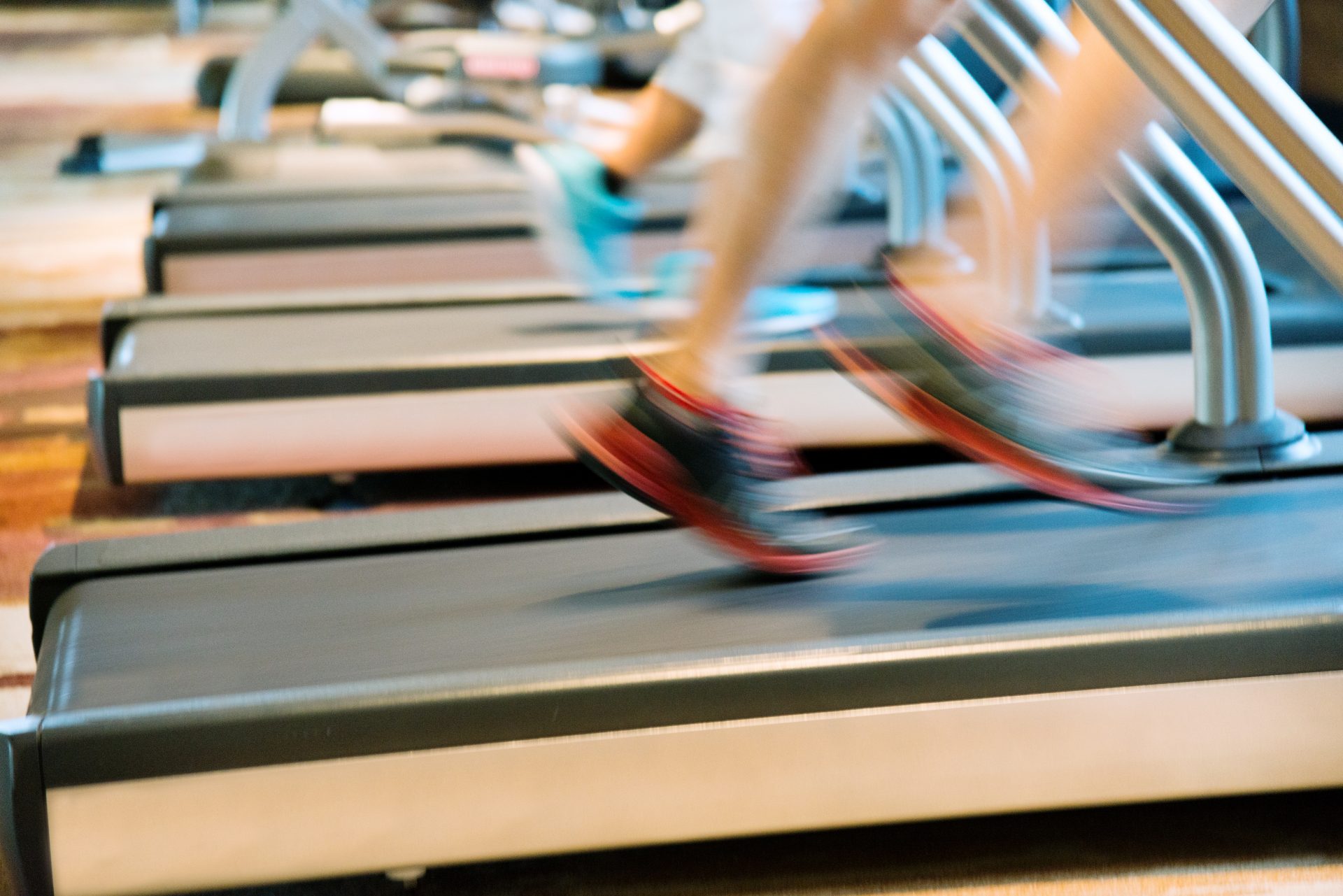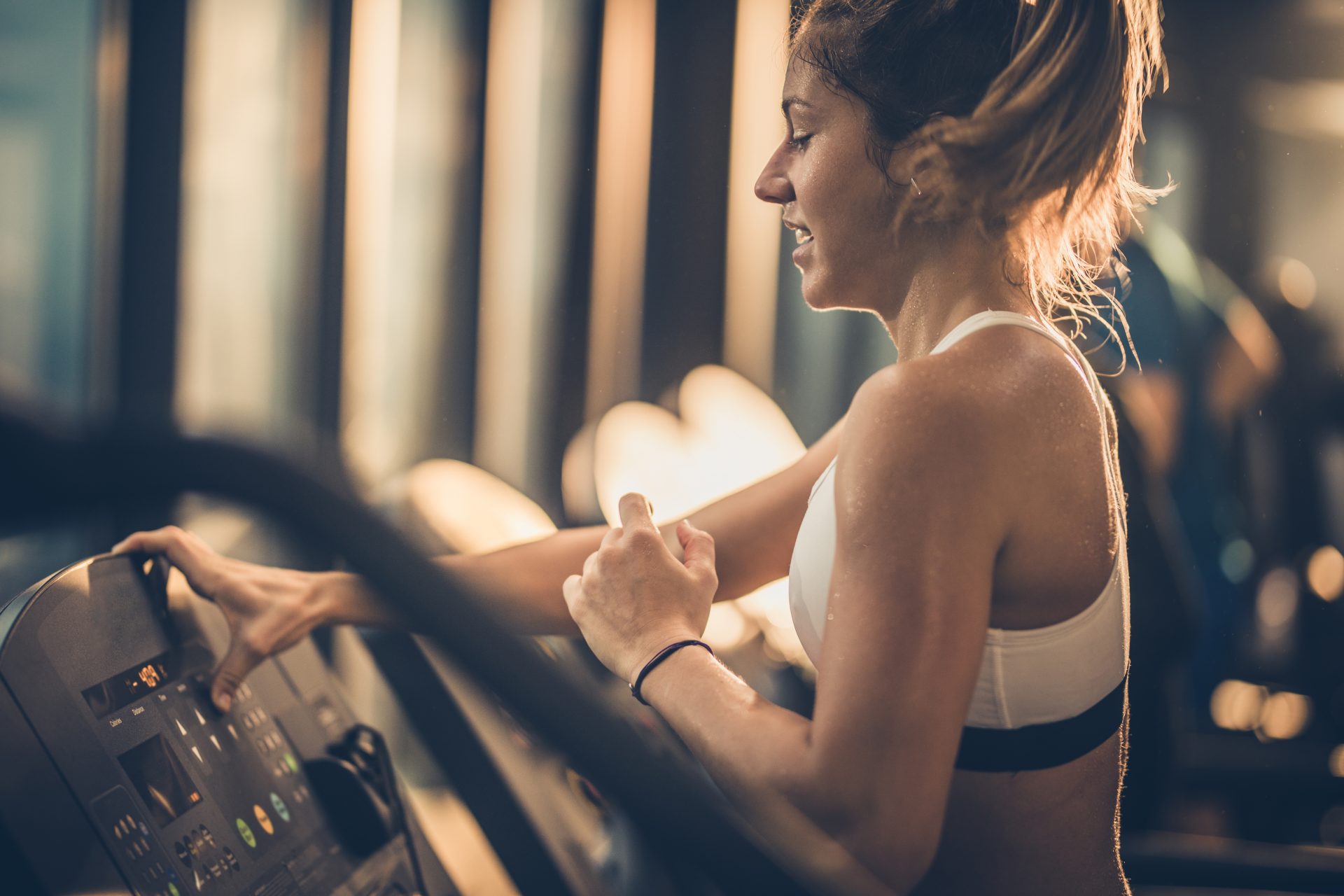Want to give your indoor running workouts a boost? With gyms set to reopen in England from 12 April, we asked running experts for boredom-busting tips and advice to make treadmill training more interesting…
Even since before the third lockdown closed gyms once again, many of us had adapted to taking our running routines outdoors. For others, the past year of the pandemic saw us taking up running for the first time; aiming for our first 5 or 10ks as something to do with our daily exercise.
From 12 April, gyms and other sports facilities across England will be opening their doors and indoor pools. For the runners of this world, that means being reunited with the beloved treadmill – whether it’s a dedicated and loving relationship or a simple part of a varied routine.
You may also like
Gyms reopening in April 2021: the latest rules and advice from the government on lockdown lifting
As those who feel comfortable to do so head back to indoor workouts, some might be wondering how to make treadmill runs a bit more, well, interesting.
Maybe you’ve gotten so used to running outdoors that the thought of losing the scenery (or hills, if you’re so inclined) is unthinkable; maybe you’ve got a new fitness goal or just fancy a change of pace.
Whatever your aim, a treadmill still has its place in any routine – and it needn’t feel boring or repetitive. “Training on a treadmill has a lot of benefits, besides being able to do it in all weathers” says Alex Parren, PT, running coach and nutritionist for Meglio.
“Having the ability to precisely control the speed makes it perfectly suited to pre-determined sessions like intervals. You can write your session in advance with exact speeds and timings and know you’ll be able to stick to them without too much thought.”

“Also, treadmills allow you to control the incline at which you run. For some people this may not seem that important, but if you live in a completely flat area – for example – and need to do hill training, a treadmill can allow you to do that by adjusting the incline. Likewise, if you live in a very undulating area but want somewhere you can try for a PB or do sprint training, you can do that on the flat surface of the treadmill.”
To take your treadmill workouts to the next level, check out these tips, advice and workout ideas from running experts.
You may also like
Running: 16 tips to make your run feel easier and more enjoyable
1. Starting again? Don’t overdo it.
Before we go flying into it, it’s important to acknowledge that many of us won’t have set foot in a gym for a very long time. Even if you were smashing PBs or running marathons before lockdown, don’t assume or expect yourself to be at that same level of fitness.
“Ease yourself into it and build up the pace and mileage over time,” recommends Kerry Dixon, athlete and co-founder of The Athlete Method. “Consistency is key to see results and avoid injury.”
With that in mind, be kind in how you set your routine as well. Just because you can go every day, doesn’t mean you should. “Two to three times a week is a great starting point.” says Kerry.
You may also like
Post run stretches: how to stretch after running to avoid achy legs
2. Vary your workouts
When you’re on the treadmill – or even running outside, for that matter – do you do the same thing every time? The same route, the same distance, the same time? While your consistency and disciple is certainly admirable, it might actually do you a few favours to vary your workouts.
“Variety improves your fitness by not allowing the body to plateau,” says Kerry, “and it allows the body the opportunity to adapt to the training. It will also help improve your stamina and strengthen muscle groups.
Most of all, it’s mentally more enjoyable and helps with motivation to complete a workout.”
Remember: the added benefit of treadmill training is that you can play around with your speed and incline to create a solid interval programme. Kerry recommends the following interval workout for treadmill training:
Warm up: 5-8 minute jog
Run: 45 seconds at high speed e.g. level 8-10
Jog/walk: 2 minutes at low speed e.g. level 3-5
Repeat this 6-8 times
Be sure to check in with your RPE (Rate of Perceived Exertion) on a scale of 1-10, with level 1 being easy and level 10 being so tough you can’t speak. “A very fit person should aim to be at a 9-10 by the end,” says Kerry, “but someone just starting their fitness journey should aim to be at a 6-7 while they build it up.”

3. Vary your whole weekly routine too
It’s a complete myth that you should be red in the face and aching from head to toe after every gym session. “In fact, 80% of your running should feel ‘easy,’ says Alex. “This means you should be able to comfortably hold a conversation. Although it may seem this isn’t the way to get fit, it really is.
So if you’re training six times a week, make sure four of those sessions are easy and only two leave you gasping for air and aching for days afterwards. This is the key to not getting injured and being able to train consistently which is the healthiest way to build your fitness and strength.”
You may also like
Mobility workouts for runners: the benefits and how to do them
4. Give fartlek a go
Stop giggling at the back. What the heck is fartlek, you ask? This Swedish term, which literally translates as “speed play,” is a form of interval training whereby each interval is randomised so that your body doesn’t adapt and you make better fitness gains.
“Doing the same 30-second intervals over and over again can get boring and repetitive,” says Alex. “Not only for your mind but for your body too. By mixing things up with fartlek, you keep your body guessing and you won’t get bored either.”
Here’s an example for you to try: sprint hard for 45 seconds, then a walking recovery for 60 seconds, then a slow jog up a steep incline for 60 seconds, then a jogging recovery with no incline for 90 seconds, and so on.
You may also like
Trail running: everything you need to know about off-road runs
4. Enjoy yourself!
Could we say it any louder? “Exercise is supposed to make us feel invigorated and alive, not feel like a chore” says Alex. And we couldn’t agree more. If you don’t enjoy it, you’ll also be far more likely to quit and, like our experts said, consistency is key.
Luckily, there’ll be enough options around from 12 April for you to try some new things and find the routine that works for you.
If the treadmill is your staple and you want to make it a better place to be, don’t forget about your entertainment options too. Kerry recommends using treadmill time to try new podcasts and playlists.
“My own personal music playlists depends on my mood,” she says. “One day I might listen to a Beyoncé playlist to feel empowered, then a high-energy Hip Hop mix if I am doing a fast speed session and want to get in the zone. If I’m going on a long, easy-paced run, I like to listen to a podcast, as it feels like you have a friend having a conversation with you on your journey.”
Now you have everything you need, there’s one last important reminder: be sure to recover well, too. “Give your body adequate rest and recovery along with proper nutrition and hydration.” says Alex. “After or between each session, be sure to foam roll to boost blood flow and encourage speedy recovery. This will allow you to train more often without getting injured.”
Follow @StrongWomenUK on Instagram for the latest workouts, delicious recipes and motivation from your favourite fitness experts.
Images: Getty
Source: Read Full Article
